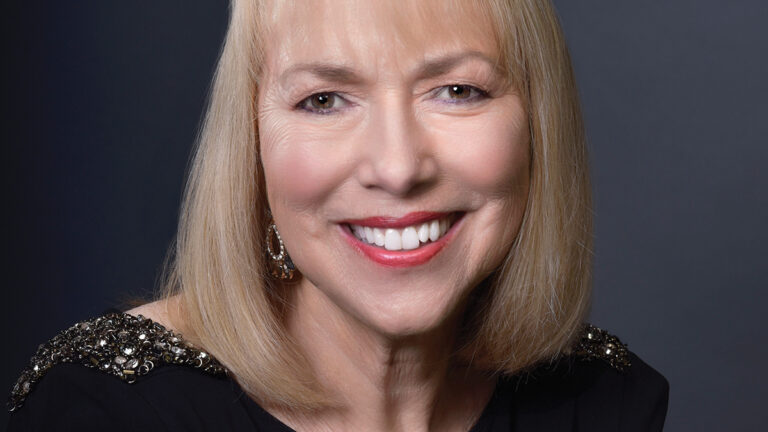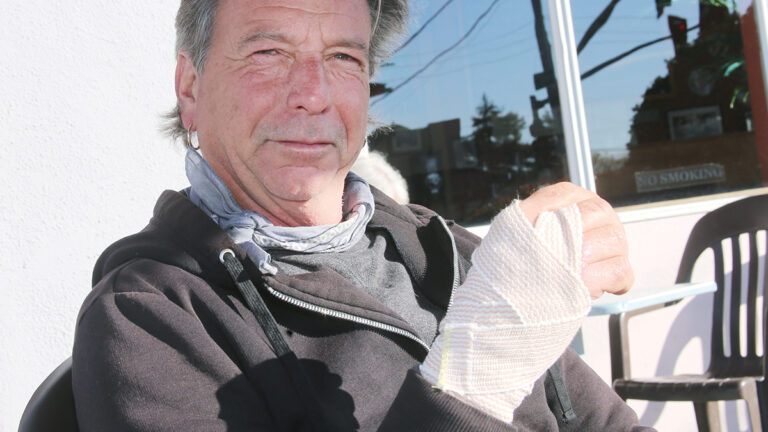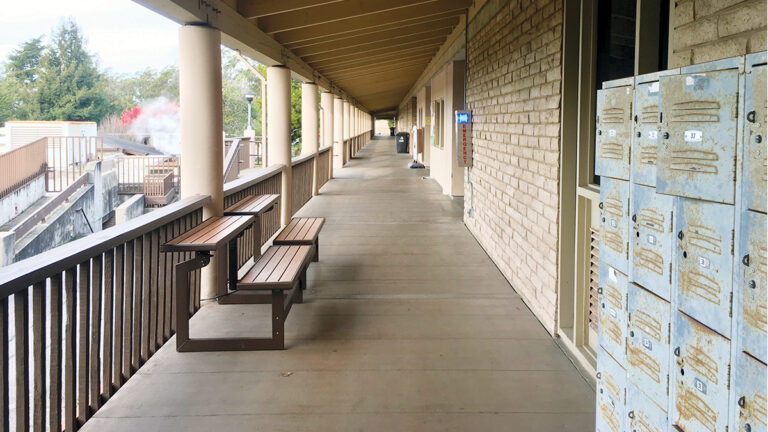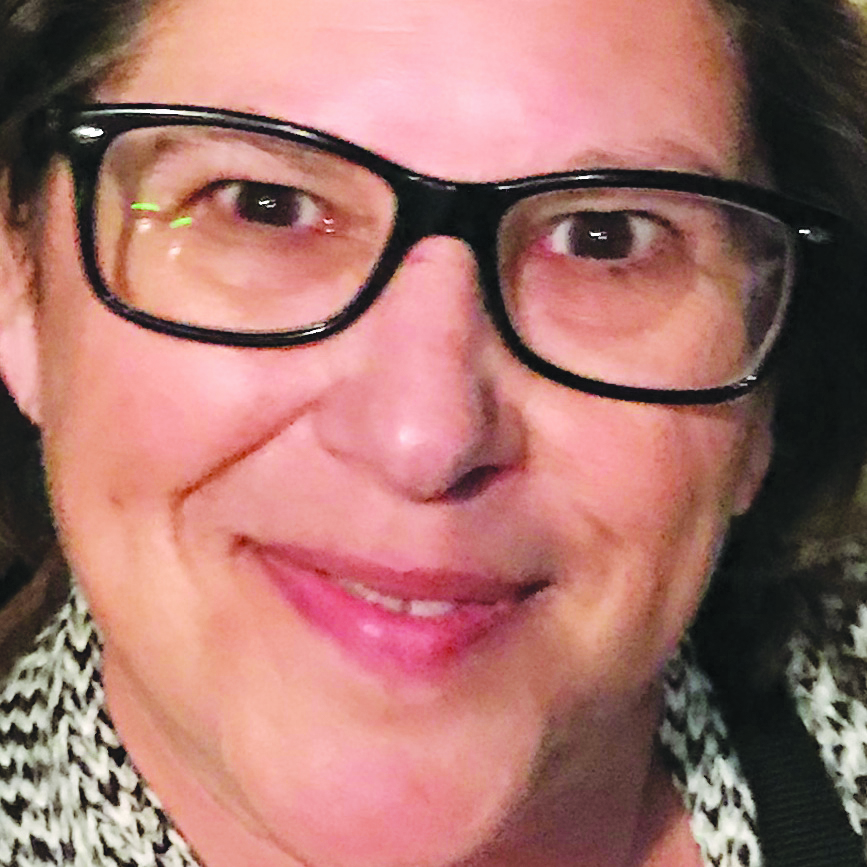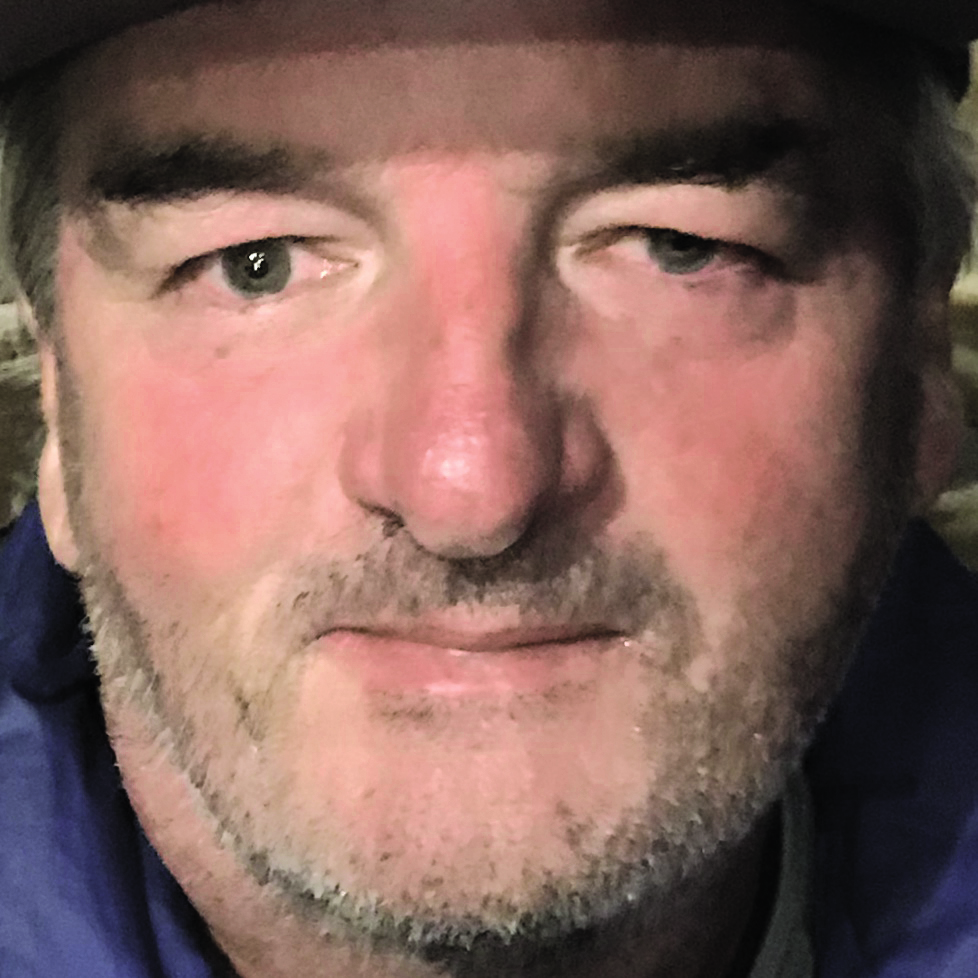The tenor’s voice, calling us to the lone prairie, is so urgent and true it brings tears to my eyes. He is singing the perspective of a fence in an endless empty landscape that once held the battered body of Matthew Shepard.
A major musical event is about to unfold on Cabrillo College’s Crocker Theater stage next week, a piece of music theater that will look, sound, and feel remarkable. The work’s innovative structure delivers brutal news, and then transcends its tragic story into a place of powerful beauty.
How it all came together took creative persistence, months of practice and, above all, inspiration.
The Story
Sky, cattle, horses, grass dancing. These are the things that sway and pass.
In 1998, Matthew Shepard, a young gay man, was tied to a fence outside Laramie, Wyoming, cruelly attacked, and left to die. In Craig Hella Johnson’s musical response to this event, Considering Matthew Shepard, we meet the vast prairie, cowboy country, and an ordinary boy named Matt. After tragedy strikes, there is grief, confusion, hostility, and ultimately reconciliation. All of this is offered in a surging counterpoint of musical styles for the audience to consider. “The piece actually became a whole lot more than just the story of the suffering,” Johnson has said. “It needed to become this larger invitation to return to love. And to return to remember who we are as human beings, in the deepest sense of our essence.”
The Music Director
We tell each other stories so that we will remember.
Choral director Cheryl Anderson describes this ambitious work as a secular oratorio based on the structure of Johann Sebastian Bach’s St. Matthew Passion. Considering Matthew Shepard follows the events leading up to the hate crime, forces us to confront the conflicting agendas swirling around the life and death of Shepard, and then asks us to reflect on how we are affected by those events.
Like Bach’s masterwork—which tells the suffering, death, and resurrection of Christ—Johnson’s oratorio presents actions, events, and moods of the major players through spoken word, aching arias, and huge, resounding chords of sorrow and joy sung by full chorus. Once the stage is set, and we are out on the Wyoming prairie, multiple choruses and soloists narrate and sing the action of those powerful days and nights.
At a Copenhagen meeting of chorale directors, Anderson heard Johnson’s Austin-based chorale group Conspirare perform the work, inspired by Leslea Newman’s novel in poetic verse October Mourning. Newman had been scheduled to speak at University of Wyoming’s Gay Awareness Week a few weeks after the night of Shepard’s death. Her poetry, which anchors Johnson’s libretto, was her artistic response to the events surrounding his death.
“It was like a two-by-four hitting me,” Anderson recalls of hearing the oratorio at that Copenhagen meeting. “Years before that I had been teaching in Wyoming for my Masters and I knew the area where it had happened.”
Since that time, Cabrillo’s Director of Choral Music has heard Considering Matthew Shepard several times, “usually unstaged, just singers simply walking up to a mike for each section.” But the Cabrillo production will go further, she promises.
“We have the latitude to do a semi-staged version. And there will be scenery. We had to approach depicting things like the fence Matthew Shepard was chained to and left to die. We had to deal with that—the fence, the one stable thing in the production.”
The production’s many musical motifs begin with this central witness, the fence, who tells the story threading through the work. It ends with the equivalent of the trial, crucifixion, and resurrection of the martyred young man.
Anderson says she knew she had to present this work in Santa Cruz.
“I’m working with a dream team,” she says. “Skip Epperson [who the Santa Cruz audience will know from work on countless Cabrillo theater and musical productions] will create sets, and Joe Ribeiro will direct.”
Anderson is equally excited about what she calls a “fabulous cast.” After open auditions, she explains, “we started working on Jan. 2. The rehearsals have been continuous since then,” except for Mondays, when Anderson rehearses her Peace United Church of Christ choir. The dynamic music director describes Considering Matthew Shepard as “a single 100-minute musical journey, with 52 singers in the main chorus, and 25-30 in the off-stage chorus, with 16 sections expressing the emotional events, including jazz and a gospel trio, a Lutheran chorale, country and western quartet, and Gregorian chant lines based upon the work of Hildegard von Bingen.” The diversity of musical styles in Johnson’s sweeping composition reflects the diversity of the social milieu in which we live.
“We’re so connected to our diverse community,” Anderson points out. “This piece was made for Santa Cruz.”
The Composer
I held him all night long. He was heavy as a broken heart.
A Grammy-winning force of choral conducting Craig Hella Johnson’s sense of mission comes across loud and clear even in a Skype session with the Cabrillo performers. “I was in San Francisco in 1998, working with Chanticleer,” Johnson, currently on the faculty of Texas State University, tells us. “And I was heartbroken when they told us what had happened. Matthew’s story kept growing in me, I held it in my heart for a long time. It had a long gestation.” He pauses. “Then in 2012, I knew I had to respond. I had one operating question: in the face of such hatred, is love anywhere to be found?’” The question guided the musical sections he would write that became the full-blown oratorio. “I wanted to pay tribute to Matt, to honor him, but also to explore hope. Hoping to find our way into a living answer.”
The story Johnson considered wasn’t a simple matter of victim versus bad guys. “I became aware of their stories, the two young men who did this to Matt, their fear and rage. I wondered, ‘How did they get that way?’” And that question broadened. “There’s not just one victim, there’s also a hostile public discourse. We share so much as one human family.”
Those layers led to the haunting quartet “I Am Like You,” which questions how we all contribute to the complex discourse. “That movement seems to resonate the most for people,” Johnson says. “We want to be called forth like that.”
Johnson says he knew immediately what the point-of-view of the piece would be.
“I knew from day one that I would tell it from the fence’s perspective, the only real witness to the events. And that became a powerful symbol, standing in for the cross [of the crucifixion in Bach’s Passion],” he says.
In true post-modern fashion, many musical genres are brought together in this single work. “I wanted to invite in all those other composers and musical styles,” Johnson says. “The piece begins with the familiar Bach C Major Prelude, a symbol of our original wholeness. It announces that this story is true for all of us—nobody excluded. And the piece ends with it as well.” A gospel trio refers to the three oboes Bach used in his cantatas. Another portion comes from Britten’s Ceremony of Carols, almost like an invocation of protection.
Given all these musical styles, Johnson knows that Considering Matthew Shepard is difficult to characterize. What does he call it?
“I like the phrase ‘fusion oratorio,’ a new kind of multi-genre oratorio. I wanted to keep the large musical form alive. And ‘sacred’ is too big a word to be confined to church and religion.” He grins a big, impish grin. “I like to play the boundaries. Uppermost in my mind and heart, I wanted to lay a canvas out there for considering what had happened. I’m deeply interested in connecting. I think of all the missed connections in our lives. We are already connected, but we live as if we’re not. We’re already in it together, so let’s just go through it together.”
Johnson is thrilled about the Cabrillo production of his work.
“It’s pure joy to see it going on—you are growing the piece forward, all of you who are part of this production. I’m very moved.”
The Staging
Won’t you meet me here, Where the old fence ends and the horizon begins.
Longtime Cabrillo director, actor and Theater Arts instructor Joe Ribeiro was tasked with staging the work in a way that allows access to its unique structure. Folk, choral, solo arias, gospel, plus a bit of classical pop ala Leonard Bernstein, all combine to tell the sacred events of Matthew Shepard’s life, death, and what came afterward. “It’s quite a challenge for me to create a ‘staged’ performance of this work which is more oratorio style than a dramatic one,” Ribeiro says. In oratorio works, singers stand on risers in front of a conductor and a few soloists, and proclaim an important story by means of choral music. Ribeiro taught and directed at universities in his native South Africa before joining the Cabrillo faculty in 1996, and he has enlivened many Shakespeare Santa Cruz productions as an actor.
“This work is obviously quite different and unique to any play or opera I have ever directed. It is an eclectic musical work without classical plot or character structure or development, or strictures for that matter,” says Ribeiro. “It is a mixture of realism and fantasy—for example, the fence is a character and sings!” The spare sets evoking key places in and around Laramie, Wyoming, will be the work of Cabrillo’s longtime resident Scenic Designer Skip Epperson, veteran of countless college productions and winner of the Gail Rich Award and Rydell Fellowship.
The Performers
He was my son, my first-born, and more.
“I read the libretto, watched The Making of Considering Matthew Shepard documentary, listened to the piece and wept,” recalls mezzosoprano Diane Syrcle, whose professional background in opera informs her role in this Cabrillo production. “We started rehearsal the first week in January with a full read through. The work uses direct quotes from the Shepards, the news, poetry and Matt. It was heart breaking,” she admits. “A delight to know I was joining such a diverse and talented group of singers.” Syrcle sings the words of Matthew’s mother, Judy Shepard at the beginning of the oratorio, and portrays many other characters throughout the piece. “Just like an opera, we are inhabiting characters, portraying their emotions musically and emotionally. The greatest challenge has been creating emotional distance from the story in order to make it through without crying.”
Syrcle’s participation is personal as well as musical. “I came out in 1984 in a small panhandle of Texas college town. It was scary,” Syrcle remembers. “When news broke about Matthew Shepard, my spouse and I joined the thousands around the country in vigil. It was a turning point in the lives of LGBT folks, who in the face of brutality determined to be out, proud, visible, and unafraid. Today, more than ever, we need opportunities to express our pain, offer compassion to ourselves and others, and find pathways of belonging.”
Syrcle’s rich and burnished mezzosoprano lifts the words spoken by Matthew Shepard’s mother high into listeners’ hearts.
“As a singer, I find the music gorgeous and accessible and challenging,”she says. “Cheryl is a visionary, a constant inspiration. Joe has elevated the artistic conversation for each singer. He challenges us to invest in the emotions of the music, the pathos of the text, and creating a compelling story.”
The Rehearsal
Where O where has the innocence gone?
Two weeks before the opening, an evening rehearsal provides a window onto both the process and the full effect the final piece will achieve. Stage director Ribeiro moves among the singers onstage, whispering suggestions, arranging arms and postures. Sitting back down in the empty audience, score in front of him, his arms direct their focus. He points upward, and their heads and eyes lift up toward the balcony. He gives a thumbs up. The singing begins.
“Ordinary Boy” articulates how full of life, of promise, of longings for the future was the young Matthew Shepard. A country and western folk anthem asks, “Will anyone remember me?” Much Kleenex will be consumed during the course of this music. Inventive, beautiful, yet immediate, where the style of Broadway show tunes connects with old time folk songs.
The singers say and sing what happened and who was there. “My heart is an unset jewel,” sings an impossibly beautiful tenor voice. As the ensemble responds, the stage director reminds them to “bring your mood and your character with you onstage.” Small bits of spoken sound morph into complete words, then an urgent chanting of all the voices expands into a huge sonic wraparound of emotion. A dischordant trio sings inner thoughts. “Am I like you?” they ask. “I am like you,” they answer. Anderson has coaxed extraordinary vocal dynamics from her singer/actors. From bright to velvety dark, the musical color ebbs and flows. Whispers erupt into percussive explosions of sound.
A haunting aria sung by Thomas Webb, “Where Has the Innocence Gone?,” is reminiscent of James Taylor. It swells to include all voices in a lullaby of loss. The lonesome prairie seems to materialize on the stage. It is difficult to imagine a dry eye in the house during this powerful musical experience. The oratorio’s fence—the place of Shepard’s crucifixion—gives way to an unfettered horizon. The future. Our shared future.
CONSIDERING MATTHEW SHEPARD
A work for chorus and soloists with instruments and percussion by Craig Hella Johnson. Music Director Cheryl Anderson and Joseph Ribeiro, Stage Director. Ten semi-staged performances by Cabrillo Music and Theater Arts Departments, accompanied by Ensemble Monterey Chamber Orchestra, will be performed March 4-15 at the Crocker Theater, Cabrillo College. cabrillovapa.com/events/considering-matthew-shepard.
Updated 02/26/2020: Misspelling of Joe Ribeiro’s name corrected.



